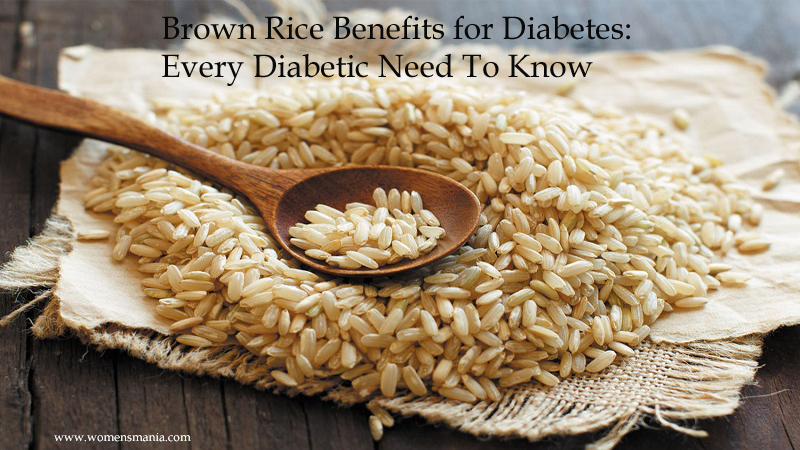Brown rice, a whole grain packed with essential nutrients, has gained popularity as a healthier alternative to white rice, especially for individuals managing diabetes. Packed with essential nutrients, this whole grain offers a myriad of benefits that can positively impact blood sugar levels. In this article, we’ll explore 10 compelling benefits of brown rice for diabetes, address frequently asked questions, and shed light on potential side effects.
10 Amazing Brown Rice Benefits for Diabetes:
Explore the remarkable benefits of brown rice for diabetes management. From stabilizing blood sugar levels to promoting heart health, discover how incorporating brown rice into your diet can positively impact your overall well-being.
1. Low Glycemic Index (GI):
Brown rice boasts a low glycemic index, making it an ideal choice for individuals with diabetes. This means it causes a slower and steadier rise in blood sugar levels, promoting better glucose control.
2. Rich in Fiber:
The high fibre content in brown rice aids digestion and helps regulate blood sugar levels. Fibre slows down the absorption of glucose, preventing sudden spikes and crashes.
3. Essential Nutrients:
Brown rice retains its outer layers, containing valuable nutrients such as B vitamins, magnesium, and antioxidants. These contribute to overall health and well-being.
4. Weight Management:
Incorporating brown rice into a diabetes-friendly diet can support weight management. The fibre content promotes a feeling of fullness, reducing the likelihood of overeating.
5. Heart Health:
Diabetes increases the risk of heart disease. Brown rice contributes to heart health by aiding in the reduction of cholesterol levels and supporting cardiovascular well-being.
6. Stabilizes Blood Sugar:
The complex carbohydrates in brown rice release glucose gradually, preventing sudden spikes in blood sugar levels. This stability is crucial for diabetes management.
7. Source of Resistant Starch:
Brown rice contains resistant starch, a type of carbohydrate that resists digestion. This can have positive effects on blood sugar control by promoting a slower release of glucose.
8. Improved Insulin Sensitivity:
Studies suggest that regular consumption of brown rice may enhance insulin sensitivity, helping the body respond more effectively to insulin.
9. Antioxidant Properties:
The antioxidants in brown rice help combat oxidative stress and inflammation, which are often elevated in individuals with diabetes.
10. Aids in Digestive Health:
The fibre content in brown rice supports a healthy digestive system, preventing constipation and promoting overall gut health.
FAQs:
Q1: Can I eat brown rice daily if I have diabetes?
A: Yes, you can include brown rice in your daily diet. However, it’s essential to monitor portion sizes and maintain a balanced overall diet.
Q2: How does brown rice differ from white rice for diabetes?
A: Brown rice has a lower glycemic index and higher fibre content than white rice, making it a healthier option for individuals with diabetes.
Q3: Are there specific recipes for incorporating brown rice into a diabetes-friendly diet?
A: Yes, there are numerous recipes like brown rice bowls, stir-fries, and salads that can be customized to suit a diabetes-friendly diet. Consult with a nutritionist for personalized meal plans.
Potential Side Effects of Brown Rice:
1. Arsenic Concerns:
Brown rice may contain traces of arsenic. Rinse the rice thoroughly before cooking and consider diversifying your grain choices.
2. Digestive Discomfort:
Some individuals may experience digestive issues initially due to the fibre content. Gradually introduce brown rice into your diet to allow your digestive system to adjust.
Incorporating brown rice into a diabetes management plan can offer a multitude of benefits, from blood sugar control to overall well-being. However, it’s important to be mindful of portion sizes, consider individual health conditions, and be aware of potential side effects. As with any dietary changes, consulting with a healthcare professional or nutritionist is recommended for personalized advice.
n conclusion, brown rice can be a valuable addition to the diets of individuals with diabetes due to its low glycemic index, high fiber content, and nutrient density. However, it’s crucial to consume it in moderation and be aware of potential side effects. As with any dietary changes, it’s advisable to consult with a healthcare professional for personalized advice based on individual health conditions.





